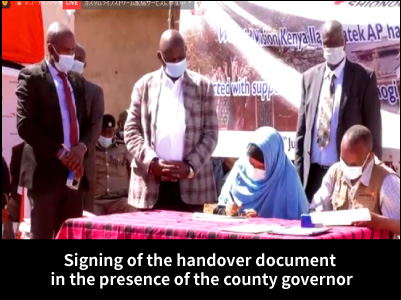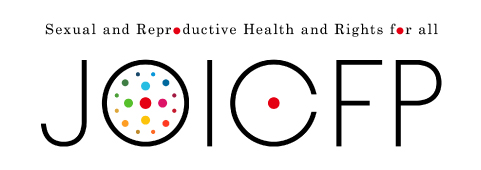Mother to Mother SHIONOGI Project
News
- The Year 2 Final Report updated!Third Term Project:Nakuru Country, Republic of Kenya (From June 2023)
- The Year 2 Final Report updated!Third Term Project:Upper Manya Krobo District, Republic of Ghana (From June 2023)
- Activities and Results updated! Second Term Project : Ganze Sub-County, Kilifi County, Republic of Kenya (From April 2020 to December 2023)
Project concept
![From Japan to Africa. -Our Love for Mothers and Children Goes Around and Expands- [Mother to Mother SHIONOGI Project] Our project supports children's and mother's health as the basis of prosperity of society](/content/dam/shionogi/global/sustainability/society/social-contribution-activities/mtom/images/mtom_top_concept_en.png)
To build a sustainable society, it is necessary to create a favorable environment for the next generation of children to grow healthy.
"Mother to Mother SHIONOGI Project" aims to achieve universal health coverage (UHC) by protecting pregnant and breastfeeding women and children under 5 years of age from preventable death and strengthening health systems.
Vision
To develop sustainable communities for the well-being of mothers and children.
Goal
- Improving health of pregnant and breastfeeding women and health of children under 5 years of age
- Establishment of sustainable community health systems
Activity overview
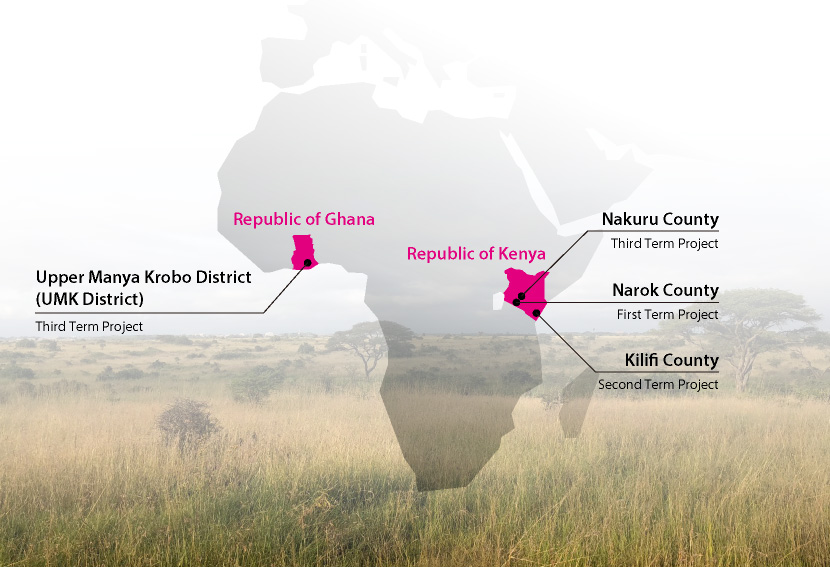
This project has worked to improve maternal and child health in Africa since 2015 with World Vision Japan (WVJ). We completed the second term project in December 2023. We are currently implementing the third term project with WVJ in Nakuru County of Kenya, and with Japanese Organization for International Cooperation in Family Planning (JOICFP) in Upper Manya Krobo district in Eastern Region of Ghana.
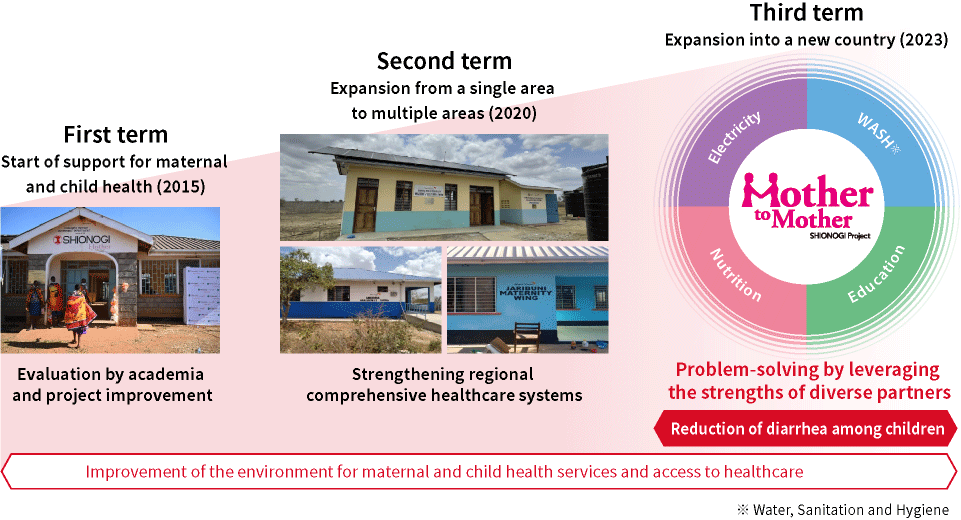
- ※It maximizes the impact of the efforts by organizations including business enterprises, governments and NGOs/NPOs by their collaborative commitment to solving social issues.
< Collaborative partner >
・First Term Project: WVJ
・Second Term Project: WVJ, Panasonic Holdings Corporation
・Third Term Project: WVJ, JOICFP
Challenges in Sub-Saharan Africa
Sub-Saharan Africa still sees 73※1 under-5 mortality per 1,000 live births and 536※1 maternal mortality per 100,000 live births, with a huge difference from the relevant targets set in the Sustainable Development Goals (SDGs) ("as low as 25" and "less than 70", respectively※2).

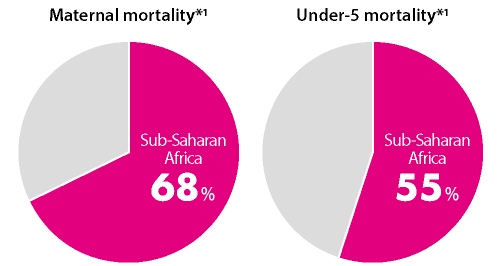
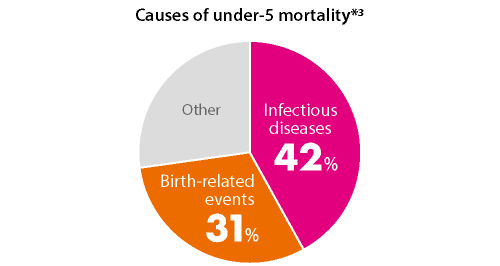
- ※1unicef THE STATE OF THE WORLD ’S CHILDREN 2023
- ※2Targets of Sustainable Development Goal 3 (WHO)
- ※3Child Mortality Report 2023
It is necessary to improve the environment for pregnancy and childbirth and to tackle the problem of infectious diseases of children
- ※Child Mortality Report 2023
Three pillars of activities
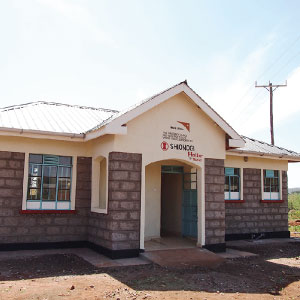
Improvement of infrastructure
- Building health facilities
- Maintaining equipment and fixtures
- Providing mobile clinic services
- Building water supply facilities, etc.
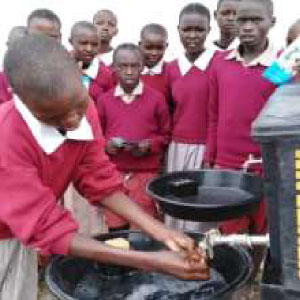
Education and sensitization
- Capacity building of healthcare workers
- Training of community healthcare workers
- Awareness-raising activities for community people (about health, nutrition, and hygiene)
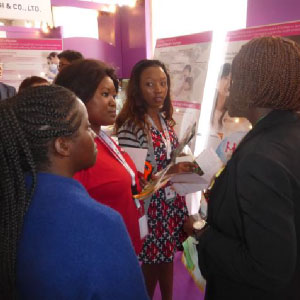
Enhancement of the community support system
- Promote the participation of community people in addressing health service issues
- Facilitate the partnership between the communities and government officials
- Enhancement of monitoring and evaluation
- Community healthcare workers continue to conduct awareness-raising activities for community people
- Community people understand the significance of health services and use them
- Community people become accustomed to proper nutrition and hygienic behavior
- Community people take the initiative in improving health services
- The government and its partners collaborate to monitor the activities
Project Goal
Improving health of pregnant and breastfeeding women and health of children under 5 years of age
Project Goal
Establishment of sustainable community health systems
Project Vision
To develop sustainable communities for the well-being of mothers and children
Achievements of this project
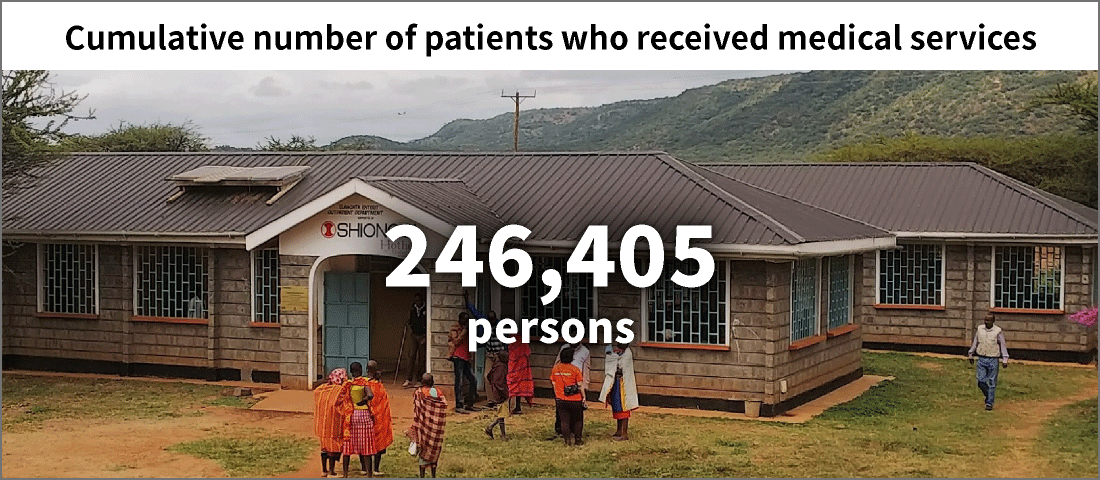
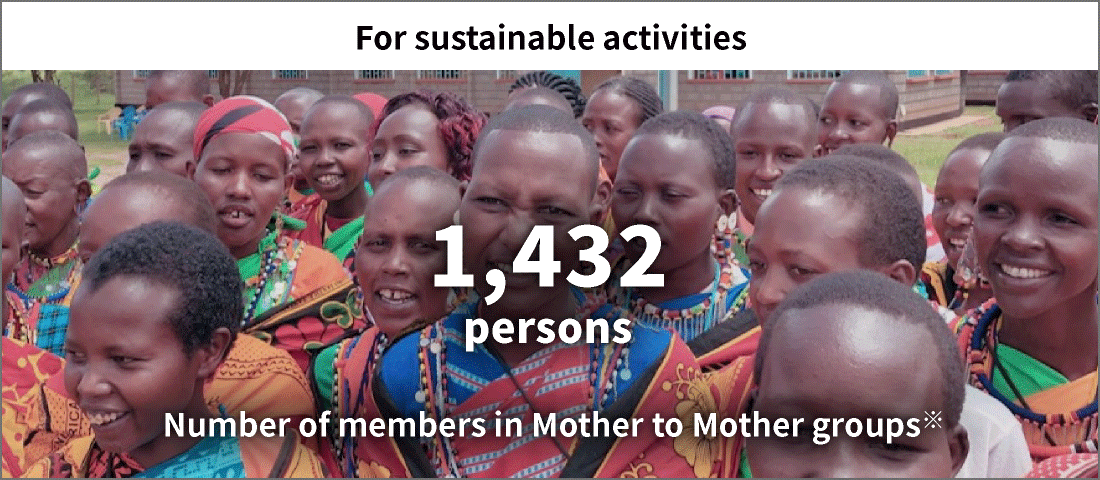
- ※Activity in which mothers in each region form groups and teach each other about maternal and child health and nutrition (peer education). The number of members has been revised due to a revision of the definition of the group: 2,350 persons → 986 persons (as of April 12, 2024)
1st) Project Overview
2nd) Project Efforts in Kilifi Country, Kenya
3rd) What's "Mother to Mother Group"
Origin of “Mother to Mother”
The Mother to Mother SHIONOGI Project began with the thought of a Shionogi employee who took a leave of absence from the company and was assigned to Kenya in 2009 as a Japan Overseas Cooperation Volunteer of the AIDS countermeasures program of the Japan International Cooperation Agency.

“I would like to help Kenyan mothers who are sincere about receiving AIDS treatment for the sake of their children.”
In Kenya, there were people who went to the hospital to continue to receive proper treatment for AIDS.
Many of them were women with children.
They have to protect their children and families.
To this end, they have to deal with their own health problems.
Mothers who were sincere about receiving treatment were always in front of me.
“I found that medicine that was simply provided was not reaching the people who needed it.”
When I was in Japan, I thought that if we provided medicine free of charge, it would be delivered to people who needed it and help save their lives.
However, when I actually went to Africa, I found that medicine that was simply provided was not reaching the people who needed it.
I returned to Japan feeling discouraged.
Feeling distressed that I couldn’t do anything about it at the time, I kept thinking about a solution to the problem. I finally arrived at the idea that I would take advantage of the power of Shionogi, a pharmaceutical company that has been striving infectious diseases for a long time.
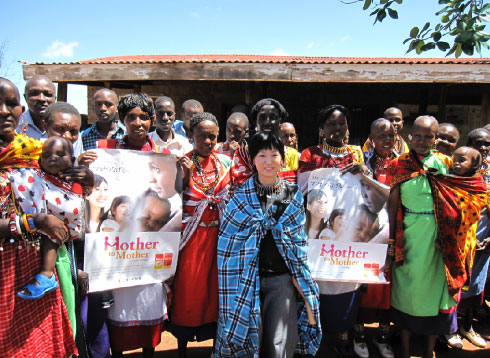
The number of people who sympathize with my idea has increased in Shionogi. Then, we launch a maternal and child health support project in partnership with World Vision Japan.
Cooperation with employees in the Mother to Mother SHIONOGI Project
In this project, each employee is committed as a member of society to helping solve maternal and child health issues in developing countries.
(1) Contribution through donations made by employees
Employees make donations through the Shionogi Social Contribution Support Association “Socie” to this project.
In addition, we have established a system to support this project through donations using reward points granted to employees according to their use of cafeteria systems and Web- and app-based healthcare support services.
(2) Activities promoted together with employees: Mother to Mother Ambassadors
We utilize our website and hold in-house lectures to enable our employees to deepen their understanding of maternal and child health issues in developing countries and collaborate with each other in considering and implementing what they can do to improve access to healthcare and achieve UHC.
Moreover, as of March 2023, 353 employees support activities in this project by serving as “Mother to Mother Ambassadors,” who advocate the significance and details of project activities within their own organizations.


